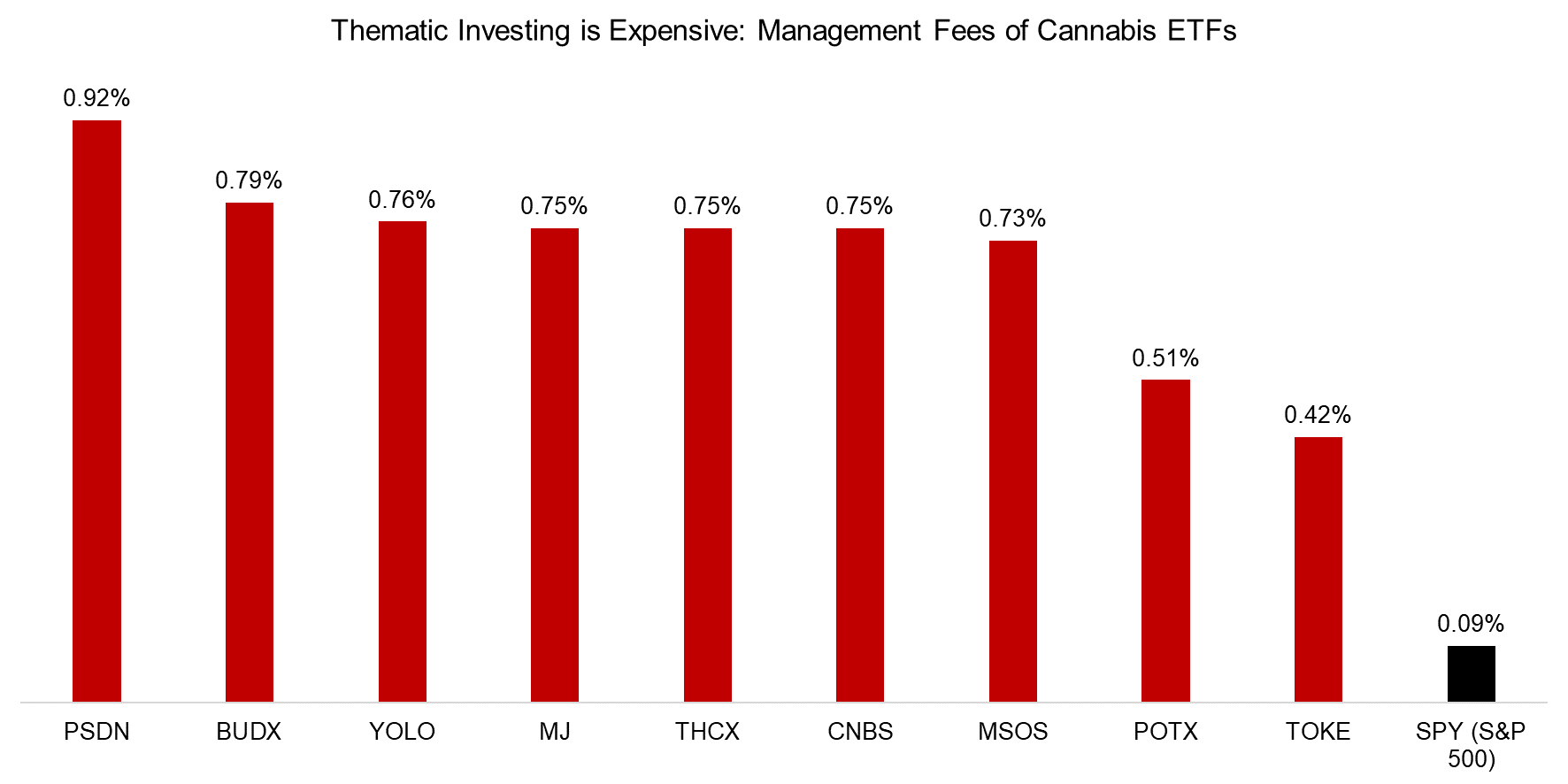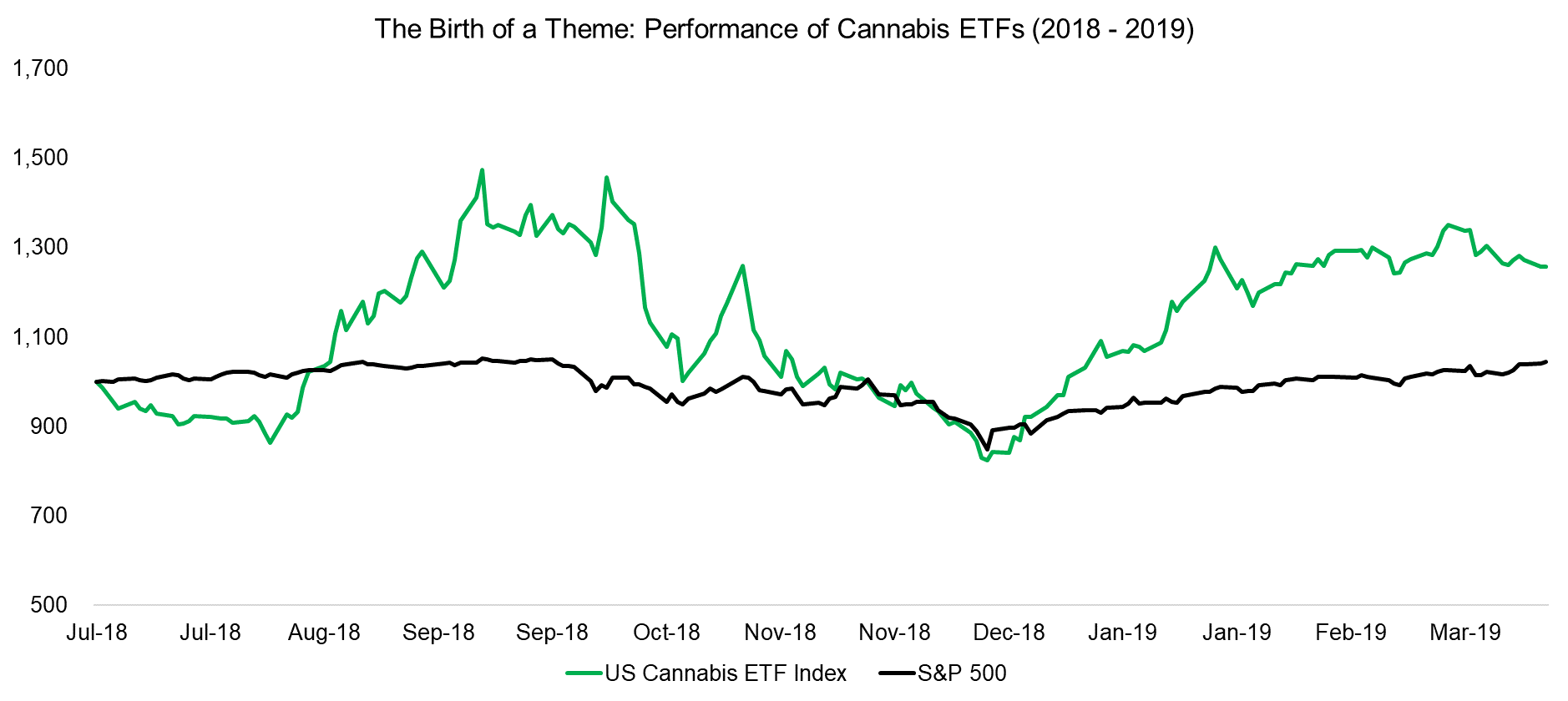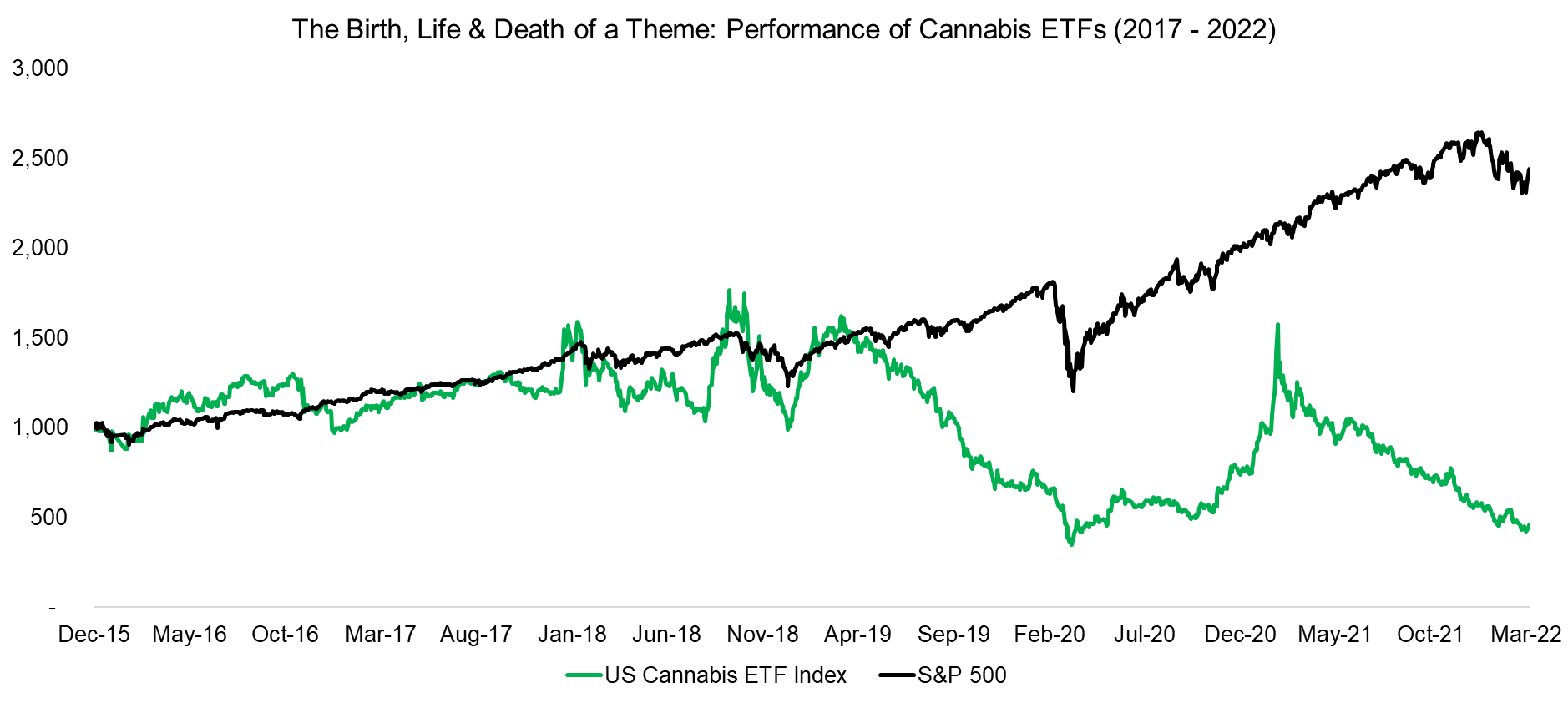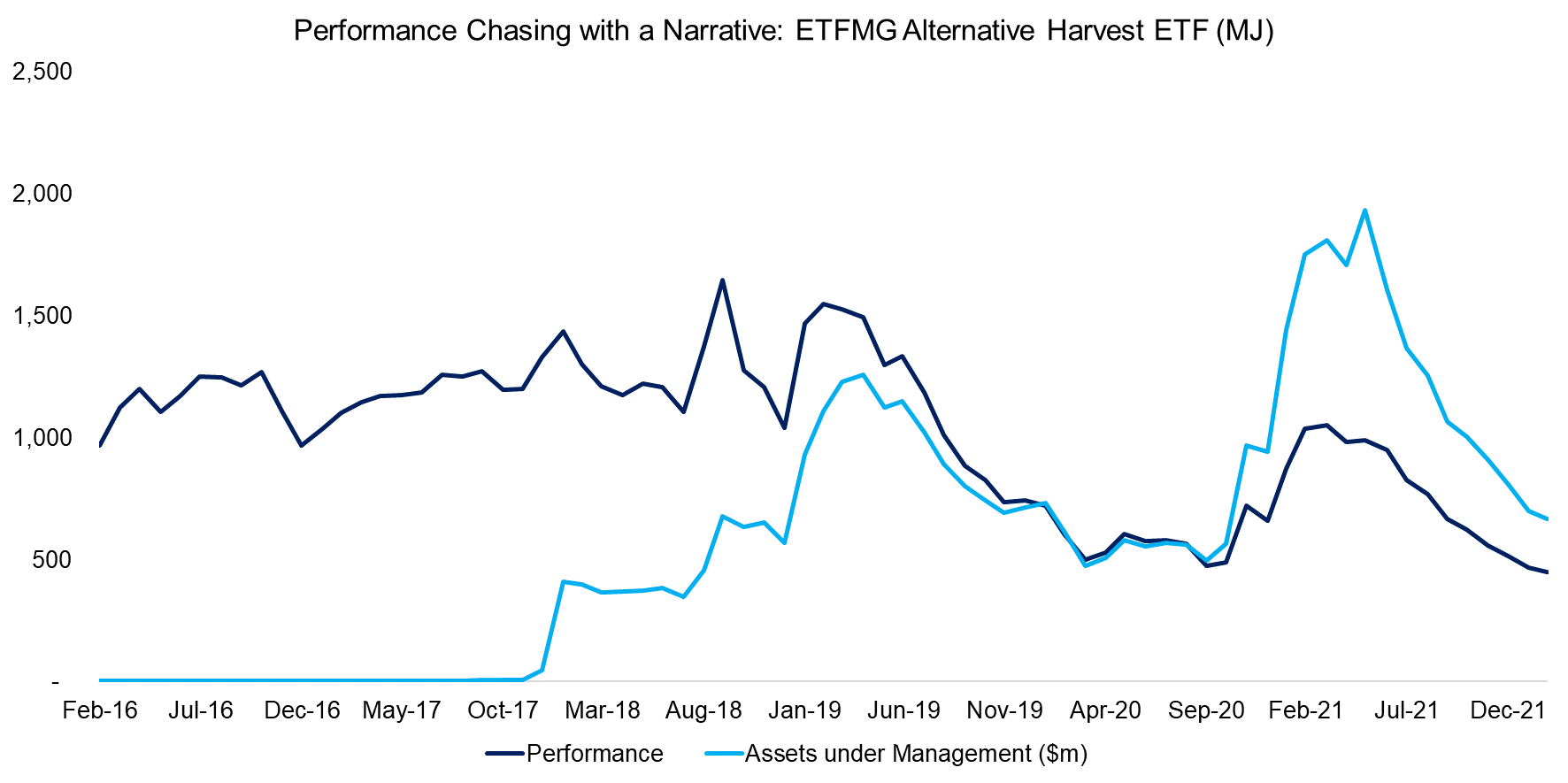An Anatomy of Thematic Investing
Performance chasing with a narrative
May 2022. Reading Time: 10 Minutes. Author: Nicolas Rabener.
SUMMARY
- Thematic investing is combining a good story with positive performance
- Unfortunately, themes often collapse when the story does not play out as expected
- Or when valuations have become excessive due to investors’ enthusiasm
INTRODUCTION
The ETF database and news website ETF.com categorizes Cathie Wood’s ARK Innovation ETF (ARKK) as the largest thematic ETF in its database. Although ARKK is down approximately 60% over the last 12 months, compared to +1% for the Nasdaq 100, the ETF still manages almost $10 billion of assets.
However, ARKK does not really fit the definition of thematic investing, which is a bet on certain structural trends rather than individual companies or sectors. A thematic portfolio should consist of one or several themes that are created from as many stocks as possible, ideally equal-weighted, in order to avoid firm-specific risks.
In contrast, ARKK’s top 10 holdings constitute 60% of the ETF’s portfolio, which represents simply a concentrated actively managed portfolio comprised of growth stocks.
Given the poor long-term track record of active managers, the odds of ARKK fully recovering and significantly outperforming the Nasdaq are fairly slim. Although ARK Investments manages several ETFs that ensure some business longevity, it will be interesting to see if the firm will soon be forgotten, or manages to revive its tarnished reputation. The quick rises and equally quick falls in fame are something where highly active and thematic investors overlap (read Thematic Investing: Thematically Wrong?).
In this research note, we will analyze the birth, life, and death of a theme.
CANNABIS ETFS
We select cannabis stocks as a theme as that was one of the major ones over the last five years. Specifically, we choose ETFs that focus on cannabis stocks and are traded in the US. This is a universe of nine ETFs that cumulatively manage slightly above $2 billion of assets.
One of the hallmarks of thematic investing is that the products are expensive. The management fees of cannabis ETFs in the US range from 0.42% to 0.92%, compared to 0.09% for the SPDR S&P 500 ETF Trust, the world’s largest ETF.
The fees can be even higher, for example, when considering short or leveraged products like the Canadian-traded BetaPro Marijuana Companies Inverse ETF (2.0%) or BetaPro Marijuana Coms 2x Daily Bull ETF (2.06%).

Source: FactorResearch
THE BIRTH OF A THEME
Humans are suckers for stories and these explain much of human history. The Russian army has been told that Ukraine needs to be denazified and liberated, which was an inspiring and motivating story for Russian soldiers until they met a fiercely resisting population that neither consisted of Nazis nor was seeking liberation.
Thematic investing is all about storytelling. Themes can be diverse, e.g. a country moving from a frontier to emerging market status, a resource becoming more scarce, a new technology about to revolutionize our lives, and so on. The best themes are as easy to grasp for a retail as for an institutional investor. They are difficult to refute as they are about the future, which can only be proven wrong in hindsight (read Thematic Indices: Looking at the Past or the Future?).
Back to cannabis stocks: The interest in legally profiting from cannabis has always been high, but difficult to execute given the use of cannabis is a crime in most countries. Uruguay was the first country that legalized the recreational use of cannabis in 2013, but that did not matter much for investors. More relevant was when Canada followed in 2018. A number of cannabis companies completed IPOs in record time to raise capital for building their operations. ETFs providing exposure to this emerging space followed shortly.
An equal-weighted index of cannabis ETFs in the US outperformed the S&P 500 in parts of 2018 and 2019, mainly fuelled by the hope that the US would follow Uruguay and Canada. The recreational use of cannabis had already been legalized in a few US states like Oregon, Washington, and Colorado, but it was still a federal crime that made it difficult for companies to operate in that space. Legalizing cannabis on federal level would be a game-changer and offer investors the opportunity to participate from potentially highly-profitable and fast-growing businesses. A theme was born.

Source: FactorResearch
THE BIRTH, LIFE, AND DEATH OF A THEME
The two characteristics of thematic investing are having a good story and attractive returns. No matter how sexy a theme is, the majority of investors only hop onto the train once it started moving uphill. Naturally, this makes thematic investing so dangerous as it appeals to our love for stories, and greed for making money. Stated differently, thematic investing is performance chasing with a narrative.
We can see the risk of buying into a theme when we view the performance of the cannabis stocks over a longer time period. These stocks performed in line with the S&P 500 between 2015 and 2017, and then outperformed strongly during the next two years, where various hopes for a broader US legislation for the recreational use of cannabis emerged.
However, investors’ enthusiasm drove the companies’ valuations to levels that were not supported by fundamentals, and the federal law in the US did not change. Eventually, mean-reversion settled in and the cannabis stocks significantly underperformed the S&P 500 since 2019. An investor that bought into the theme at its peak in 2019 would have lost more than 50%, compared to a gain of more than 100% in the US stock market.

Source: FactorResearch
The investor behavior becomes clear when comparing the performance of a thematic product and its assets under management. We take the ETFMG Alternative Harvest ETF (MJ) as a case study. The ETF was launched in 2015 and has the longest track record of cannabis ETFs in the US.
The assets under management were below $100 million until the cannabis theme emerged in 2017 when assets jumped to over $1 billion. However, as the performance deteriorated in 2019 and 2020, assets dropped accordingly. Naturally, the assets of any investment product decrease as performance turns negative, but it highlights that investors do not pursue a theme if the returns are unattractive. They are not true believers and are simply chasing performance.

Source: FactorResearch
FURTHER THOUGHTS
The economy and world continuously evolve and change the way we live. Participating in and profiting from these changes as investors is a perfectly reasonable investment strategy. However, the implementation matters.
Pursuing this via thematic investing subjects our investment decision-making process to our biases that result in poor results. Better is to implement this systematically via trend following on asset class or momentum on stock level. It is far less exciting than chasing the latest story, but creates a much better long-term narrative.
RELATED RESEARCH
ABOUT THE AUTHOR
Nicolas Rabener is the CEO & Founder of Finominal, which empowers professional investors with data, technology, and research insights to improve their investment outcomes. Previously he created Jackdaw Capital, an award-winning quantitative hedge fund. Before that Nicolas worked at GIC and Citigroup in London and New York. Nicolas holds a Master of Finance from HHL Leipzig Graduate School of Management, is a CAIA charter holder, and enjoys endurance sports (Ironman & 100km Ultramarathon).
Connect with me on LinkedIn or X.

